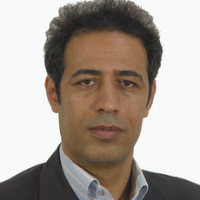Optimizing the Structure of Traditional Bazaars with Emphasis on Spatial Configuration and Interconnection(Case Study: Kermanshah Bazaar)
Disorders created in various physical, functional, and semantic dimensions that are the results of not paying attention to the structure and spatial organization of ancient cities and their main arrangement. Disorders make it necessary to review and explore more desirable methods of designing and organizing urban spaces. The increasing expansion of cities requires urgent measures and the city is forced to accept change. Changing urban trends in different economic, political, and cultural fields, migration-based urban growth, lack of proper development policies and disorder of urban land use distribution, inconsistencies in building composition, separation of structures and functions, lack of hierarchy in public spheres, and contradictions in different patterns have led to the combination of mass and space and the obvious distinction between the new and the old.Antiquities and traditional buildings are among the most important factors in introducing the culture and civilization of the ancestors of every nation. Among these works, the bazaar is one of the main components of the urban structure and the center of social, economic, and cultural exchanges. Meanwhile, Kermanshah bazaar with a length of 2700 meters, like many traditional bazaars with different components, has not been an exception to this change. The construction of Sepah or Modarres Street in 1935, which led to the closure of the covered bazaar of Kermanshah and the separation of the two sections of goldsmiths and Islamic, is a clear example of the lack of attention to the physical context and the current condition of this building and the hasty implementation of this street. Therefore, to prevent increasing disorganizations in the city, it is necessary to take distinct measures to establish a subtle but inseparable link between the axes and historical elements such as bazaars and current important functions in the city. The purpose of the present study is to investigate the effects of spatial configuration and interconnection as relational characteristics in the spatial understanding of traditional bazaars.
In general, field research procedures and data collection tools including observation, visit and perception of the site and the use of various libraries, as well as databases, computer networks, Web sites photo archives and magazines were used in this research. AutoCAD, GIS, and space syntax software were used for the analysis. One of the tools of spatial analysis is explanatory diagrams based on the graph theory. In this way, each space is a node and the connection between the two spaces is drawn as a line connecting the two nodes. In this research, the graph program was used. In this software, which can specify the smallest axis lines, maps are entered in JPEG format. In the present study, the area of Islamic and goldsmiths bazaars in Kermanshah was selected. In the first step, after creating a pivot map in AutoCAD, we entered it into Depthmap software to obtain the relationship between nodes and the degree of interconnection and depth. The resulting functions (Reach, Gravity, Betweenness, Closeness, and Straightness) provided outputs in the form of raw analysis that provide block performance, population role weight, and additional access role indicators in the study area.
To determine the degree of interconnection according to the size of the study area, the area of goldsmiths and Islamic bazaars was divided into 4 zones. According to the results, in zones 2 and 4, green space forms distinct uses. According to the spatial arrangement theory, after entering maps in the graph software, the output was such that the northern parts of the body of the areas have more spatial depth and less interconnection. After entering the maps in the GIS software and analyzing them through the functions that we have dealt with, it can be said that creating coherence and interconnection in the spatial organization of the city is effective both for the regeneration of the old texture, especially the old structure of the city and for the elimination of the disorders of the contemporary urban textures.
- حق عضویت دریافتی صرف حمایت از نشریات عضو و نگهداری، تکمیل و توسعه مگیران میشود.
- پرداخت حق اشتراک و دانلود مقالات اجازه بازنشر آن در سایر رسانههای چاپی و دیجیتال را به کاربر نمیدهد.



